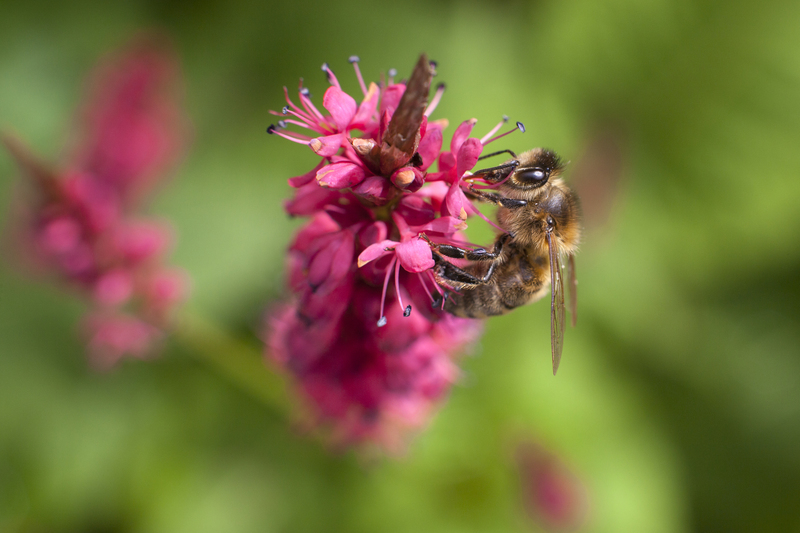Comprehensive Guide to Perfecting Garden Seating Arrangements
Posted on 15/09/2025
Comprehensive Guide to Perfecting Garden Seating Arrangements
Creating the ideal garden seating arrangement is both an art and science, combining style, comfort, function, and aesthetics. Whether you have a sprawling backyard or a quaint urban courtyard, the way you arrange your outdoor furniture can transform your garden into an oasis of relaxation and connection. In this comprehensive guide, we'll explore everything you need to know about perfecting your garden seating layouts and arrangements for gatherings, personal retreats, and visual harmony.
Why Thoughtful Garden Seating Layouts Matter
Seating arrangements in your garden are about more than just finding a spot to sit; they influence how you experience your outdoor space. Well-designed garden seating:
- Enhances comfort and usability for yourself and guests
- Improves the visual appeal of your landscape
- Encourages relaxation, contemplation, and social interaction
- Allows you to enjoy the best views, scents, and sounds your garden offers
- Maximizes space and accommodates a variety of activities
Let's examine the core principles every homeowner or garden designer should know before perfecting their outdoor seating arrangements.

Fundamental Principles of Effective Garden Seating
Assessing Your Garden's Features
Before placing any outdoor furniture or creating specific seating zones, analyze your garden:
- Sun exposure: Which parts get the most or least sunlight?
- Views: Are there focal points, such as flower beds, water features, or scenic landscapes?
- Shelter: Where is it windy, shaded, or exposed to rain?
- Traffic flow: How do people move through your garden?
- Level and access: Is your garden flat or sloped? Are there steps, paths, or accessibility needs?
Mapping these elements helps you determine the best areas for seating and ensures your arrangements fit your garden's unique strengths.
Defining the Purpose of Each Seating Area
Purpose determines placement. Different outdoor seating arrangements serve different needs. Consider:
- Entertaining: For dining alfresco or large gatherings, choose spacious, easily accessible zones near the kitchen or grill.
- Private retreat: Select secluded corners, surrounded by lush planting for reading or meditation.
- Family use: Place seating with shade and visibility near lawns or play equipment to supervise children.
- Enjoying views: Orient benches or chairs towards your best vistas.
By designating distinct functions for each area, you'll maximize comfort and usability.
Popular Types of Garden Seating Options
There's a wide array of garden seating furniture and formats available, appropriate for different needs and aesthetics. Consider these popular choices:
Benches
- Classic and versatile; great for both formal gardens and rustic landscapes
- Ideal for paths, under trees, or tucked among flower beds
- Materials include wood, metal, stone, or composite
Dining Sets
- Perfect for hosting meals, parties, and family gatherings
- Should be placed on a level surface: patio, deck, or dedicated terrace
- Choose weather-resistant materials for longevity
Lounge Furniture
- Sofas, lounge chairs, sectionals and daybeds for relaxation
- Often grouped around a fire pit, coffee table, or central feature
- Add cushions, throws, and side tables for ultimate comfort
Integrated Seating
- Built-in benches, walls, or ledges can provide sleek, space-saving solutions
- Perfect for smaller gardens or modern landscapes
Movable Chairs and Stools
- Footstools, pouffes, bistro chairs--flexible, casual, and easy to reposition as needed
Mix and match types of seating to suit your garden's needs and ensure there's space for both solitude and gatherings.
Designing the Ideal Garden Seating Arrangement
Step 1: Analyze and Plan
Begin by sketching your garden's layout, marking key features, sunny/shady zones, and sightlines. List how you want to use the space; this will dictate your seating choices and arrangements.
Step 2: Select Your Main Seating Spots
- Identify the primary gathering area--for example, a dining space close to the house.
- Pinpoint secondary, intimate zones--by a pond, beneath a tree, or at a garden's end.
Step 3: Consider Flow and Accessibility
- Leave space for footpaths and movement--avoid cramming furniture into narrow spots.
- Ensure wheelchairs or strollers can pass easily where needed.
Step 4: Optimize Views and Experiences
- Use furniture orientation to frame views, face sunsets, or admire flora and fauna.
- Place seating near fragrant plants, water features, or birdsong for sensory enjoyment.
Step 5: Add Comfort and Versatility
- Shade: Include umbrellas, pergolas, or trees to protect from the sun.
- Privacy: Add trellises, tall containers, or hedges for seclusion.
- Accessories: Scatter cushions, throws, and small tables; include lighting for evening use.
Inspiring Garden Seating Arrangement Ideas
1. The Circular Social Hub
- Arrange a circle of chairs or curved benches around a firepit or central table
- Encourages conversation and a sense of equality
- Ideal for both formal lawns and informal wooded areas
2. Sun Trap Breakfast Nooks
- Place bistro tables and chairs in the spot that catches early morning sun
- Perfect for solo coffee breaks or intimate dining
3. Secluded Reading Retreat
- Install a cushioned bench or hammock in a shaded, private corner ringed by shrubs
- Include a small side table for books or drinks
4. Multi-Level Terraces
- On sloped sites, create stepped paved terraces with different seating arrangements on each level
- Combine dining above with a sun lounger terrace below
5. Integrated Seating Walls
- Build low stone or rendered walls edged with cushions--blending structure and function
- Saves space and provides all-weather durability
How to Choose Furniture for Outdoor Comfort and Durability
It is crucial to select materials and styles that withstand the elements while complementing your overall garden design. Here's what to consider when investing in garden seating furniture:
- Weather resistance: Opt for materials like teak, treated metal, powder-coated aluminum, or all-weather wicker.
- Low maintenance: Look for furniture that's easy to clean and won't require extensive upkeep.
- Comfortable design: Test-seat before buying--ensure cushions support proper posture.
- Storage: Foldable or stackable options are perfect for smaller gardens or winter storage.
- Aesthetic harmony: Match your furniture's style and color to your planting scheme and hardscaping.
Don't forget to consider sustainability--recycled materials or FSC-certified wood are better for the environment.
Tips for Styling and Personalizing Your Garden Seating
- Layer textiles: Outdoor rugs, scatter cushions, and throws add color, comfort, and a sense of home.
- Ambient lighting: String lights, lanterns, and solar lamps create magical evening zones.
- Add shade: Stylish umbrellas, sail shades, pergolas, or climbing plants protect from intense sun.
- Go green: Place potted plants and vertical gardens adjacent to seating for instant lushness.
- Decorate with art or water features: Sculpture, birdbaths, or fountains bring personality and movement.
Personal touches make your outdoor seating arrangement feel like an extension of your home.
Addressing Common Garden Seating Arrangement Challenges
Small Spaces
- Choose bench seating against boundary walls to save room.
- Go vertical with plants and slimline furniture.
- Use foldable or stackable chairs to adapt for guests.
Large or Divided Gardens
- Break up open spaces with multiple seating areas for different purposes.
- Use hedges, arches, or trellis panels to define distinct "rooms."
Sloped or Uneven Terrain
- Create level terraces for safe, flat seating surfaces.
- Anchor furniture on sturdy paving or decks to prevent wobbling and damage.
Exposed or Windy Locations
- Use solid, heavy furniture less likely to blow away.
- Include shelter: arbors, windbreaks, or thick planting for protection.

Seasonal Adaptations for Garden Seating
The best outdoor seating arrangements adapt to the seasons:
- Spring & summer: Increase shade and flexibility; set up lounge zones for sunbathing.
- Autumn: Bring out throws, blankets, and fire pits for cozy evening gatherings.
- Winter: Store or cover lightweight furniture; position seating for maximum winter sun.
By planning seasonally, you'll extend your outdoor living enjoyment all year round.
Conclusion: Transform Your Garden with Perfect Seating Arrangements
Mastering your garden seating arrangement transforms any outdoor space--inviting connection, relaxation, and appreciation of nature. By considering purpose, garden layout, comfort, and aesthetics, you can create seating arrangements that harmonize with your home and lifestyle.
Remember to:
- Analyze your garden's strengths and limitations
- Define functional zones for various needs
- Select durable and attractive furniture options
- Incorporate styling and personal touches
- Adapt your arrangements with the seasons
With these tips, you're on the way to creating a garden that's not just beautiful, but a true sanctuary for living, entertaining, and enjoying the outdoors. Your journey to the perfect garden seating arrangement starts now!
Frequently Asked Questions (FAQ) About Garden Seating Arrangements
- Q: What is the best seating arrangement for a small garden?
A: Use built-in benches, space-saving foldable chairs, and corner seating to maximize your available space. Opt for multi-functional or stackable furniture to keep things flexible. - Q: How do I create privacy around my outdoor seating?
A: Position seating behind hedges, trellises, or tall containers. Climbing plants or decorative screens can provide instant privacy and a lush backdrop. - Q: What's the most durable material for outdoor furniture?
A: Teak, powder-coated aluminum, and synthetic resin wicker are extremely weather-resistant and long-lasting. Always check product warranties and care instructions! - Q: How do I protect my garden seating in winter?
A: Cover delicate pieces, bring cushions indoors, and choose movable items for easy storage. Weatherproof covers protect against rain and frost.
Now, go ahead and design the perfect garden seating arrangement that will make your outdoor space the most inviting and enjoyable part of your home!



